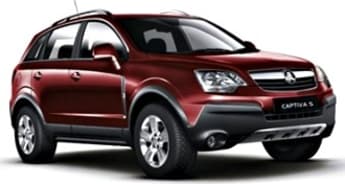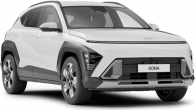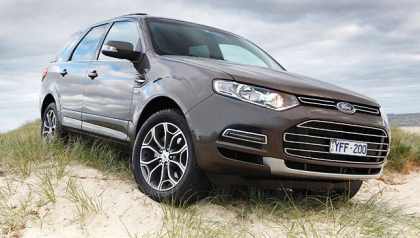Holden is hoping a new look and a brace of new engines will boost the fortunes of its Captiva four-wheel drive.
Available in two sizes and two or four-wheel drive, with five and seven seats, the Korean built Captiva competes in both the compact and medium sized SUV market segments. Leading the charge for the Series II update is an impressive 2.2-litre turbo diesel, available with both size vehicles, that is partnered with a six-speed sequential automatic. Manufactured under licence from Italy's VM Motori, it's a cracker, replacing the earlier 2.0-litre diesel and producing 23 per cent more power but using six per cent less fuel.
Captiva has enjoyed mixed fortunes since its launch here in 2006. The smaller five seat version is languishing at the bottom of the table in the highly competitive compact segment. But the larger seven seater swaps places regularly with Ford's Territory for third position behind Toyota's Prado and Kluger in the medium segment.
Captiva has always been a good thing and one of the better products to come out of the old Daewoo factory in South Korea. Although they look quite similar, the two are in fact very different vehicles, with the five-seater designed in Europe primarily for the European market.

The seven seater, with a third row of seats that packs flat into the floor when not in use, is a homegrown Korea design, with different lights and front grille as well as a flashier looking dash. It's about 8cm longer to accommodate the extra seats.
Pricing
Price cuts of $2000 for most models along with power and equipment upgrades for Series II models will certainly attract the market's attention. Priced from $27,990 the five eater is available with a 123kW/230Nm 2.4-litre four cylinder petrol engine or a 135kW/400Nm 2.2-litre turbo diesel. The seven seater, priced from $32,990, gets the same engines with the addition of the 190kW/288Nm 3.0-litre petrol V6 from Commodore.
All three engines come with the six-speed auto, which is tuned differently for each application. The entry level 2.4-litre Captiva 5 comes standard with a six-speed manual. The auto adds $2000 to the price and if you want the diesel it will set you back another $4000 (but this includes all-wheel drive).
In the Captiva 7 the diesel adds $3000 to the price of the entry level, two-wheel drive SX but only $1000 to the price of better equipped CX and LX models.
Driving
We've driven all three engine combinations and found all perform well, but the diesel is head and shoulders above the rest, smooth and quiet and a perfect match for the six-speed auto. Official fuel consumption for the diesel range from 8.1 to 8.5 litres/100km depending on model. We were getting around 9.8 litres/100km during the launch.
Holden has spent some time sharpening up the steering and reducing the body roll of the vehicle, in response to customer feedback and it shows. The safety story is also a strong one, with six airbags and electronic stability control now standard across the range.
Ironically, the manual change in the auto operates in the reverse direction to that in Commodore, which must be confusing for families that have both cars sitting in the driveway. Apparently, drivers rarely change gears manually anyway which makes one wonder why they include the facility in the first place?
Holden Captiva 2011: SX
| Engine Type | Diesel Turbo 4, 2.0L |
|---|---|
| Fuel Type | Diesel |
| Fuel Efficiency | 8.7L/100km (combined) |
| Seating | 7 |
| Price From | $5,500 - $7,700 |
| Safety Rating |
|
Pricing Guides

Range and Specs
| Vehicle | Specs | Price* |
|---|---|---|
| CX (4X4) | 2.0L, Diesel, 5 SPEED AUTOMATIC | $4,840 - $7,150 |
| LX | 2.0L, Diesel, 5 SPEED AUTOMATIC | $5,500 - $7,810 |
| SX | 2.0L, Diesel, 5 SPEED AUTOMATIC | $4,620 - $6,820 |












.png)














